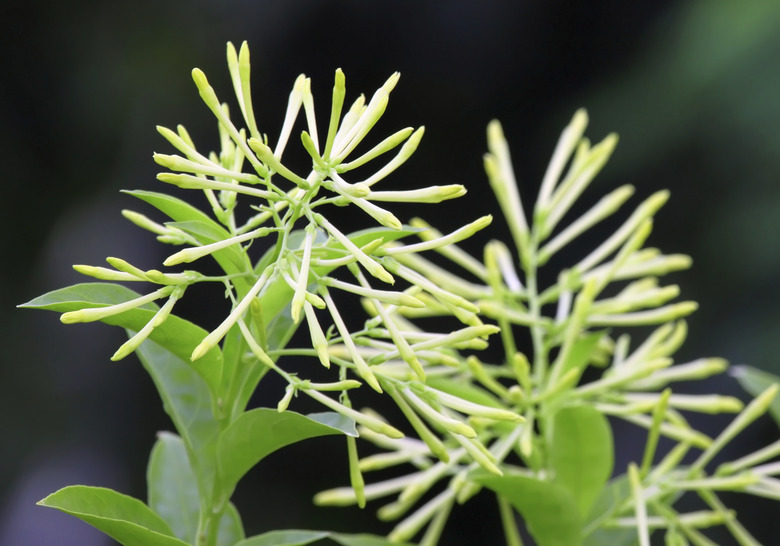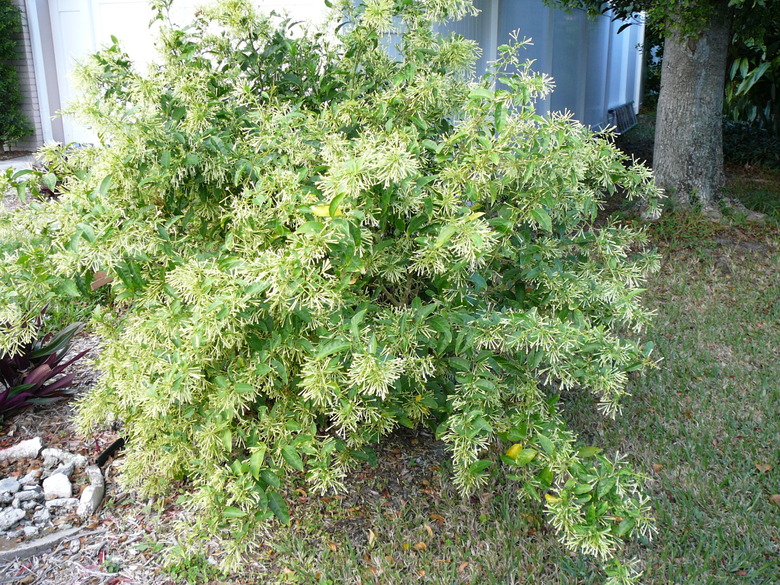Night-Blooming Jasmine Plant Care
The plant known as night-blooming jasmine releases a heavenly scent from its otherwise simple, innocuous white flowers that bloom most profusely at night. However, while it is commonly referred to as jasmine, this flowering plant is not a true jasmine; it is a jessamine.
Above all, night-blooming jessamine (Cestrum nocturnum, USDA hardiness zones 9 to 11) care entails protecting it from frost and freezes, because this is a tropical, warmth-loving plant.
Warning
Night-blooming jessamine is considered invasive in some areas of the United States, including much of Florida and Hawaii.
Call This Jasmine a Jessamine, Please
While a beautiful vine with a heady scent, "night-blooming jasmine" is a misnomer, because this plant is not a true jasmine but rather a jessamine, part of the Solanaceae family. Many gardeners and growers tag this plant by the common name night-blooming jasmine, as well as night jessamine, lady of the night, queen of the night, night-flowering jessamine and night cestrum.
Jessamine is an evergreen shrub native to the West Indies (the Caribbean islands) and Central America. It is not considered fast-growing but is a moderate grower that can reach from 3 to 13 feet in height and width.
It flowers throughout the year, producing soft, white fragrant flowers. Some gardeners report it has such a powerful scent that growing the plant indoors as a houseplant might be overwhelming.
Night-Blooming Jessamine Requirements
Night-blooming jessamine is a forgiving plant and easy to grow as long as it is situated within its growing zones. Plant it in either full sun or partial shade, although it will bloom more profusely in sun.
Like many plants, jessamine requires well-draining soil and enough space for its roots to spread. Ideally, plant it in somewhat sandy soil in a sunny spot.
Container Growing
In climates colder than zone 9, grow jessamine as an indoor plant or prepare to overwinter it indoors.
Tip
Container-grown plants require two zones warmer than those planted directly in the soil, so be sure to protect this plant during the colder months, depending on your zone.
When growing night-blooming jessamine in a container, choose a pot with suitable drainage holes and fill it with high-quality potting soil. Provide water-soluble fertilizer every two weeks. Prune it back before colder weather sets in and bring it inside to a frost-free location.
Jessamine Plant Care
Night jessamine can be easily pruned to any shape and readily produce new growth. The best time to prune is right after blooming. Propagation is easy via cuttings, although seeds are spread by birds.
After planting, water deeply in its first growing season to ensure it becomes well established. If grown in full sun, protect it from afternoon sun exposure during the hottest summer days.
It needs little fertilizer, but if you want to give it a boost, apply a slow-release, balanced fertilizer monthly.
Pests and Diseases
Night jessamine can be targeted by whiteflies, aphids and spider mites, which you can usually wash off with a squirt of the hose. If planted in poorly draining soil, it can develop root rot.

